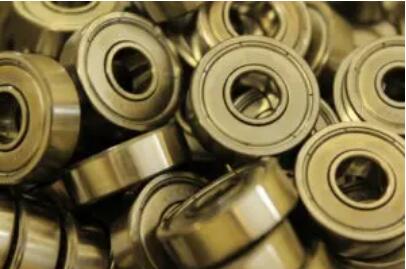Welcome to Sino Bearings web
24x7 HOTLINE:+86-28-81454188

 TECHNOLOGY
TECHNOLOGY
It is estimated that reducing friction by 10% in all large bearings used would provide the energy equivalent to the output of 18 large power stations. Reducing friction in bearings of any size is a key way to improve energy efficiency. Here, Chris Johnson, managing director of miniature bearing supplier SMB Bearings, explores bearing design possibilities to increase efficiency in industrial applications.
In recent years, bearing manufacturers have increasingly focused on making energy-efficient bearings—using new materials, lubrication techniques and advanced geometric designs to reduce losses without sacrificing load-carrying capacity.
However, energy losses in bearings are not considered to be the main focus of plant optimization, as they are already considered a high-efficiency component. However, some argue that bearings are ubiquitous and therefore the potential energy savings should not be overlooked. Let's take a closer look at three bearing design considerations to improve efficiency.
Advanced Materials
Energy efficient bearing designs focus primarily on reducing contact between the rolling elements and raceways or cages. By reducing the roughness of the contact elements, friction will be reduced.
According to a 2021 study, friction-optimized design can have a significant impact on reducing global energy losses in bearings. According to a bearing manufacturer's design, this reduction is estimated to be about 0.15 - 0.20% of global energy consumption.
Steel has traditionally been the material of choice for bearing designs, but polymer-based materials such as PTFE and nylon offer many benefits when used in less demanding environments. These benefits include corrosion resistance, reduced lubrication requirements and reduced weight.
geometry
Geometric considerations such as special cage designs and the number of balls in the bearing affect the amount of friction. The geometry and the retainer manufacturing process have an effect on the friction generated. For example, choosing a 3D printed retainer made of nylon (PA66) or other polymer materials can help reduce the weight of the entire bearing.
Carbon fiber reinforced nylon is one of the most popular combinations. It offers many of the same benefits as the standard, but it produces components that are much lighter. Surface coatings have a significant effect on reducing bearing friction. Coatings such as molybdenum disulfide and tungsten disulfide improve wear resistance, fatigue durability and reduce friction during bearing motion.
lubricating
Proper lubricants will reduce friction between bearing components and reduce metal-to-metal contact of rolling elements. While this is a great way to reduce wear, there are new materials that can significantly reduce friction compared to options currently on the market. The material in question is graphene.
The process of adding a graphene coating to a bearing is similar to adding a conventional lubricant. We will examine this form of lubrication more closely when graphene becomes readily available. In addition to being environmentally friendly, graphene flakes added to bearing surfaces can last for a considerable amount of time and provide a very low coefficient of friction (COF).
In a study on graphene's potential as a lubricant, the researchers estimated that reducing frictional energy losses provided by the new material would yield potential energy savings of 2.46 billion kilowatt-hours per year, equivalent to 1.5 million barrels of oil.
Bearing friction can be reduced by optimizing every element of the bearing design to account for friction. Significant energy savings can be achieved by multiplying the energy savings of each bearing in a machine, plant or industry.